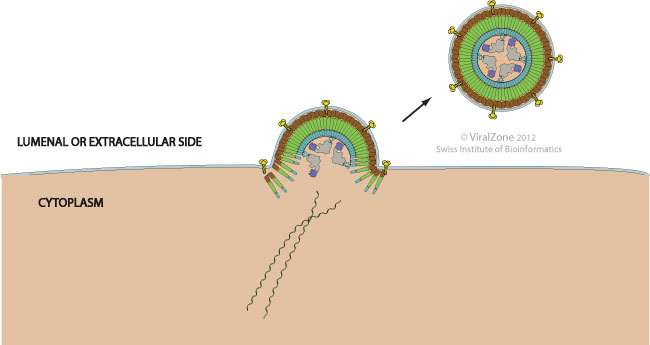Nucleocapsids assembled or in the process of being built induce formation of a membrane curvature in the host cell membrane and wrap up in the forming bud which is eventually pinched off by membrane scission to release the enveloped particle
 .
.

Many viruses, such as arena-, filo-, flavi-, hepadna-, herpes-, rhabdo-, and some paramyxoviruses, recruit host ESCRT proteins for budding.
However, for orthomyxo-, toga-, and corona- the budding is ESCRT-independent
 .
.
The only prokaryotic viruses known to bud are the Plasmaviridae
 .
.
Cell defense:
Tetherin expression that follows the establishment of the cell antiviral state impairs the release of many enveloped viruses
 .
.
ISG15 expression that follows the establishment of the cell antiviral state inhibits ESCRT-mediated viral budding. ISG15 is conjugated to CHMP5 and thereby disrupts further protein associations needed for functional ESCRT complex association
 .
.

